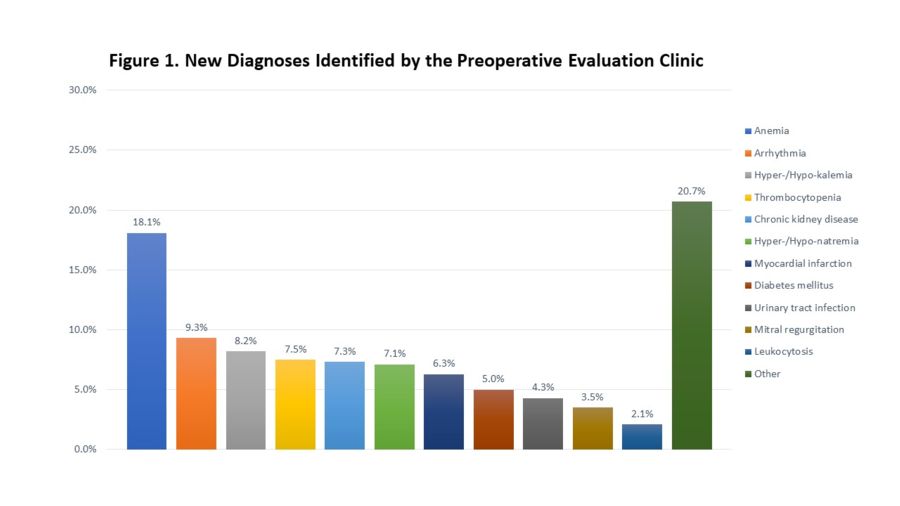2021 FSA Posters
S05: NEW DISEASE DIAGNOSES AND INTERVENTION FOR ELECTIVE SURGICAL PATIENTS BY THE PREOPERATIVE EVALUATION CLINIC: A REVIEW OF 10,589 PATIENTS
Mariana Restrepo-Holguin, MD; Yennifer Gil, MD; Vivian Hernandez-Torres, MD; Sher-Lu Pai, MD; Mayo Clinic in Florida

Introduction: The implementation of preoperative evaluation (POE) clinic has shown to improve patient safety and outcomes. A POE with complete history and physical exam may lead new disease diagnoses, allowing proper preoperative medical optimization. POE may also reduce day-of-surgery cancellation and improve documentation of the hierarchical condition category (HCC), increasing the accuracy of the risk adjustment factor (RAF) for outcome measurement. This study aims to identify “low acuity” (ASA 1 and 2) patients who received a new disease diagnosis due to the POE clinic and the interventions provided following the diagnosis. It evaluates the feasibility of the institution redirecting healthcare resources to more complicated “high acuity” (ASA3 and 4) and the appropriateness of conducting virtual POE visits without a complete physical examination.
Methods: A retrospective chart review was conducted on patients who were evaluated by the POE clinic at our institution from January 1, 2017 to December 31, 2018. Patients over the age of 18 years categorized as “low acuity” were included. Patient demographics, existing conditions requiring optimization, new diagnosis, additional preoperative testing, specialty consultation, and cancellation or delay of surgery were reviewed.
Results: 10,589 patients were included in the study. 6,371 (60%) were female and 4,218 (40%) were male. Of the 10,589 patients, 2,028 (19.3%) received a new disease diagnosis. The most common diagnoses are shown in Figure 1[PSM1] . 1,275 (12.1%) patients required optimization of a pre-existing disease. Additional testing and medical referral were needed for the patients with new diagnoses in 46.4% and 14.4% of cases, respectively. The most common tests ordered were complete blood count (n=909; 63.8%) and electrocardiogram (ECG) (n=550; 38.6%). 208 (6.7%) patients had surgery delay to allow time for medical optimization. Of the 208 cases, 144 were in patients who had a new disease diagnosis.[PSM2] Eleven patients (0.5%) underwent a procedure different from the originally scheduled surgery. New procedures, such as coronary artery bypass grafting (n=5) and heart valve repair (n=3), were performed.
Conclusions: In our study population, new diagnoses were found in 19.3% of the POE clinic patients who originally were deemed “low acuity” after pre-visit chart reviews and phone interviews. POE had a major impact on preoperative optimization for both pre-existing medical conditions and newly diagnosed diseases. The results showed the importance of preoperative laboratory testing, ECG, and in-person physical examination on diagnosing new diseases that were likely to impact perioperative patient safety and outcomes. More than 200 patients would otherwise have day-of-surgery cancellation if they were not examined due to the POE process in place. Although it was difficult to calculate the exact impact on HCC capturing and RAF adjusting, our institution estimated that these diagnoses improve the outcome measurements and increased billing. A comprehensive POE is imperative in order to optimize both preexisting conditions and new medical problems. Chart reviews on “high acuity” patients seen by the POE Clinic at our institution should be performed to understand the true impact of the POE Clinic.
References:
Anesthesiology Clinics. 2018;36(4):479-491
Am J Med Qual. 2019; 34(4):348-353
